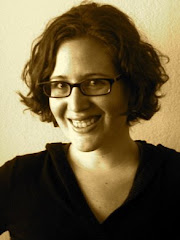balance, flexibility, and core strength. In addition, appropriate integration of loading exercise, such as jumping, plyometrics and strength training, can dramatically help the process. With the
knowledge that the combination of the two can produce unwavering results, we bring you the best of both worlds all wrapped into one!
Answers to Common Questions
Why should I improve my core strength?
The lower spine and upper thigh bones can soften with osteoporosis or osteopoenia, which may decrease your core strength. Hence, including a core strengthening program, resistant training and impact (ex. jumping) program that places stress on these areas and surrounding muscles (hip flexors and extensors, internal and external rotators, and abdominal muscles) is essential.
What are the core muscles?
The core muscles includes the deepest abdominal muscle transversus abdominus, which acts as a corset around your torso. In addition, the core muscles also include the multifidi (one of the many spinal muscles), diaphragm, and the pelvic floor. The general public tends to add the butt muscles and other abdominal muscles to this definition, but the core muscles do not move the body. Instead they act as stabilizers keep joints and surrounding tissue from extra wear and tear. These muscles (the butt and other abdominal muscles) are important additions to the core muscle for maintaining balance and lumbar pelvic stability. Deep exhalations is one way to activate the core muscles so please remember to take long deep breaths in Pilates.
Why balance training?
Since resistance training studies have shown only a 5% increase in bone mass for those with osteoporosis, it is important to include fall prevention exercises.
Why Flexibility?
Maintaining and improving your flexibility may help you maintain proper biomechanics and postural control.
What movements should I avoid if I have osteoporosis or osteopoenia?
Bending the back forward (spinal flexion) and excessive twisting (spinal rotation) of the back is not recommended since these movements may increase the likelihood of fractures in the spine, particularly the thoracic region (the vertebras that connect to your ribs).
Mondays and Wednesdays, 5:15 pm – 6:45 pm
Location:
Pilates and Beyond Studio
Contact:
Contact Breann Mitchell at 415.901.9368 or
Pilates@sfbayclub.com
Class Includes:
Initial Assessment the week of August
30th (appointment to be scheduled
separately by contacting Breann Mitchell)
90 minute classes:
45 minutes of Pilates Training with
Angeles Rios and 45 minutes of
Strength Training with John Donadini
150 Greenwich Street, San Francisco, CA 94111
415.433.2200


No comments:
Post a Comment